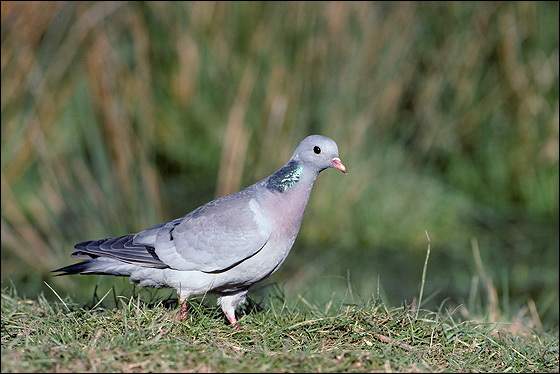Stock Dove (Columba oenas)
Pigeons do not show off a spectacular range of feeding techniques, and the Stock Dove typically just wanders along the ground, pecking. Occasionally it will feed among bushes or in the trees, too. However, this bird takes a wider range of food items than most other pigeons, including many types of wild seeds, nuts and fruits, preferring not to concentrate on one abundant foodstuff in competition with the tunnel-visioned Wood Pigeon.
Males advertise their presence with a gentle, questioning series of coos, a sound easily lost in the treetops. They also embark on a somewhat unimaginative display-flight, taking off and landing without much ceremony, and simply gliding in an arc or a circle with the wings held up in a V. A rather more vigorous display, though, and one that is shared with other pigeons, is known as “Driving”. This is a chivvying routine, designed for the males to keep their mates firmly monogamous, depriving them of time to admire alternatives. On the ground a Driving male continually chases after his mate, often pecking at her to keep her moving, and never losing sight of her; even in flight the chase and close attendance continues. Driving may last for many days, finishing only once the two eggs are laid and the male’s paternity is assured.

